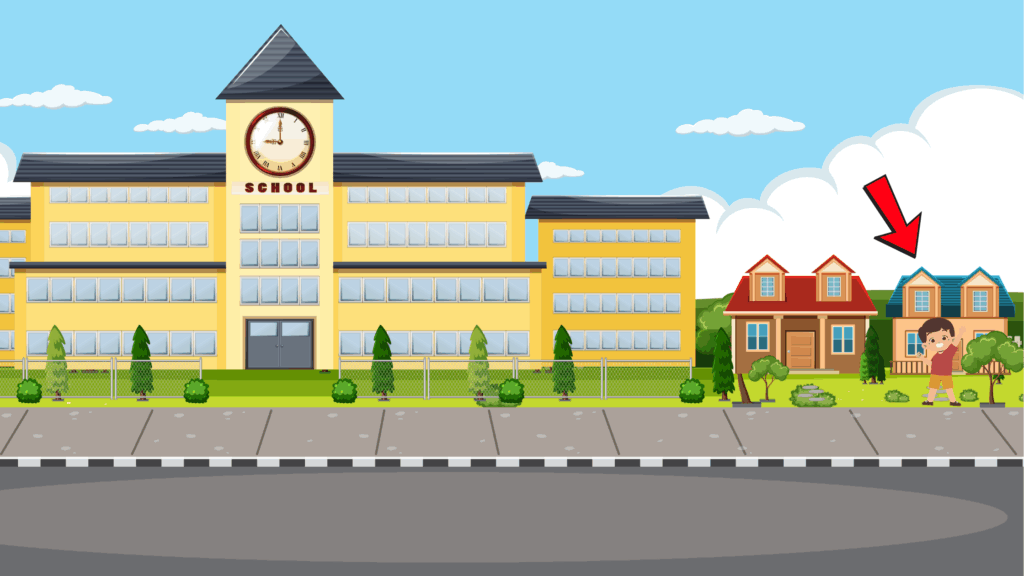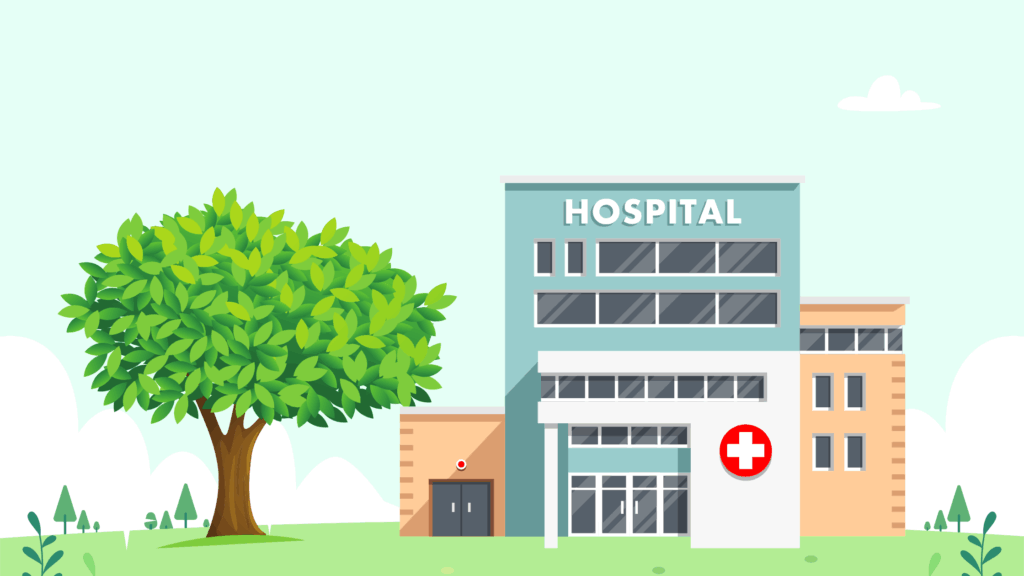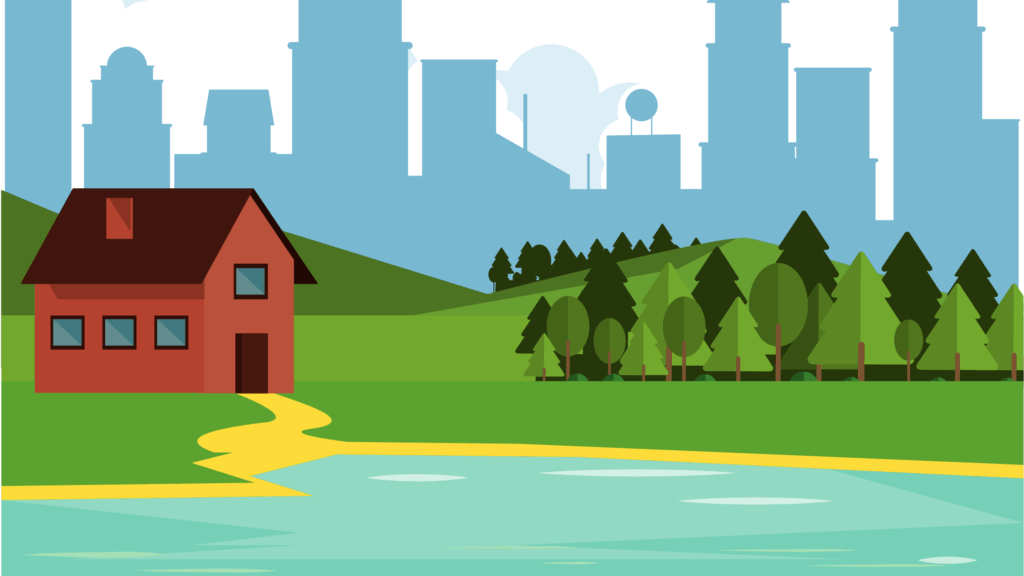In our 100-day challenge to JLPT N5 proficiency, today’s focus on “いえはどこにありますか?” (ie wa doko ni arimasu ka? – Where is the house?) builds your skills in basic Japanese grammar for navigation and directions.
Let’s dive in and make asking for places second nature!
Main Lesson
Welcome to the core of Day 28! We’ll break down how to ask where a house or place is and how to answer using simple structures.
This builds on what you know about words like ここ (koko – here), そこ (soko – there), and あそこ (asoko – over there), but now we’re expanding to full sentences for navigation. Remember, we’re sticking to hiragana for JLPT N5 beginner level.
1. Vocabulary
Start with these essential location-related words. They’ll help you describe where things are in relation to landmarks. Here’s a table for quick reference:
| Hiragana | Romaji | English Meaning |
|---|---|---|
| ちかく | chikaku | near |
| そば | soba | beside |
| となり | tonari | next (to) |
| えき | eki | station |
| こうえん | kouen | park |
| みせ | mise | shop |
| びょういん | byouin | hospital |
| ほんや | honya | bookstore |
These words are common in directions, like saying a house is near a station.
2. Grammar Points
The basic question is: “[Noun] は どこ に あります か?” This means “Where is the [Noun]?”
For example, to ask about a house:
“いえ は どこ に あります か?”
(ie wa doko ni arimasu ka? – Where is the house?)
Particles explained:
は (wa) marks the topic (like “as for the house”).
に (ni) shows location, meaning “at” or “in.”
It’s crucial for saying where something exists.
Verb:
あります (arimasu) means “exists” or “is” for inanimate things like houses, stations, or parks. Use it politely in conversations.
To answer, say: “~の ちかく に あります” (~ no chikaku ni arimasu – It is near ~) or similar. Replace ~ with a landmark. This structure is “Noun の Location-word に あります.”
Here are 5 example sentences:
- いえ は えき の ちかく に あります。
ie wa eki no chikaku ni arimasu. / The house is near the station. - こうえん は みせ の そば に あります。
kouen wa mise no soba ni arimasu. / The park is beside the shop. - びょういん は ほんや の となり に あります。
byouin wa honya no tonari ni arimasu. / The hospital is next to the bookstore.
Practice these to get comfortable with Japanese location phrases.
Practice Section
Time to apply what you’ve learned! These exercises reinforce basic Japanese grammar for locations.
Q1: おとこ の こ の いえ は どこ ですか?

- びょういん の ちかく です。
- がっこう の となり です。
- ほんや の となり です。
- がっこう の そば です。
4. がっこう の そば です。
Question:
Otoko no ko no ie wa doko desuka? – Where is the boy’s house?
Answer:
Gakkou no soba desu. – It is by the school.
※You can also say, “がっこう の ちかくです。- Gakkou no chikaku desu.”
Q2: びょういん の となり に なに が ありますか?

- ちいさい き が あります。
- おおきい き が あります。
- き です。
- き が います。
2. おおきい き が あります。
Question:
Byouin no tonari ni nani ga arimasuka? – What is next to the hospital?
Answer:
Ookina ki ga arimasu. – There is a big tree.
Q3: いえ は どこ に ありますか?

- うみ の ちかく に あります。
- うみ は そば に あります。
- うみ と となり です。
- うみ です。
1. うみ の ちかく に あります。
Question:
Ie wa doko ni arimasuka? – Where is the house?
Answer:
Umi no chikaku ni arimasu. – It is near the sea.
Common Mistakes
As an English speaker learning Japanese for beginners, watch out for these common mistakes:
1. Confusing に (ni) and で (de): Use に for existence (like “is at”), not で, which is for actions.
The house is near the station.
Wrong: いえ は えき の ちかく で あります。
Correct: いえ は えき の ちかく に あります。
2. Using います (imasu) for places: います is for living things (people, animals). For inanimate spots like houses or stations, stick to あります.
The park is next to the store.
Wrong: こうえん は みせ の そば に います。
Correct: こうえん は みせ の そば に あります。
Conclusion
Today, you mastered “いえはどこにありますか?” and how to explain locations using words like ちかく and そば, plus the key grammar with あります. This skill is vital for navigation in Japan and acing JLPT N5 conversations. Keep building – you’re over a quarter through the challenge!
Tomorrow, preview Day 28: Talking About Possession with の (No). Stay consistent with daily practice to reach proficiency. Subscribe for updates, share this with fellow learners, and let’s conquer Japanese together!



